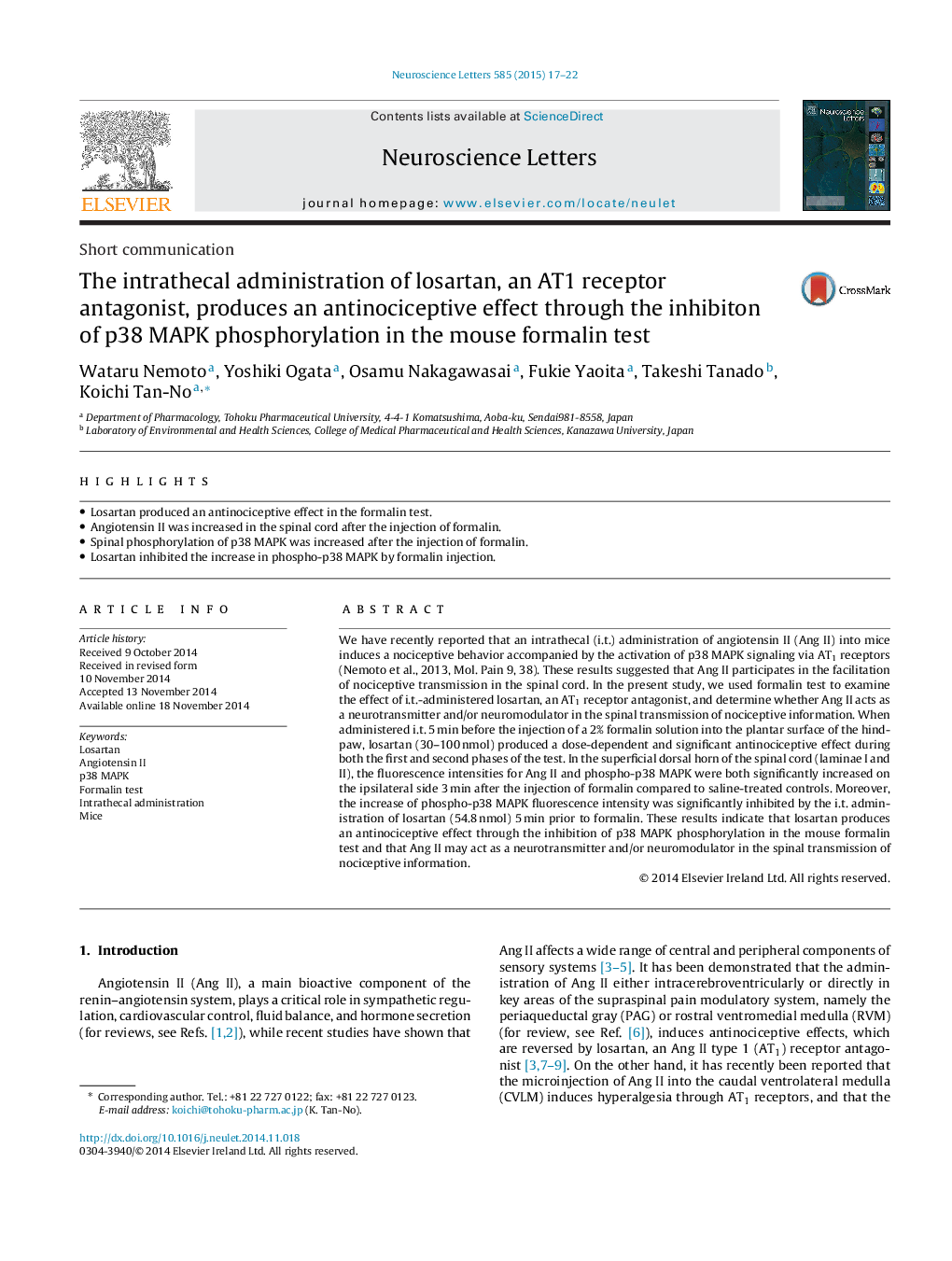| Article ID | Journal | Published Year | Pages | File Type |
|---|---|---|---|---|
| 6281149 | Neuroscience Letters | 2015 | 6 Pages |
Abstract
We have recently reported that an intrathecal (i.t.) administration of angiotensin II (Ang II) into mice induces a nociceptive behavior accompanied by the activation of p38 MAPK signaling via AT1 receptors (Nemoto et al., 2013, Mol. Pain 9, 38). These results suggested that Ang II participates in the facilitation of nociceptive transmission in the spinal cord. In the present study, we used formalin test to examine the effect of i.t.-administered losartan, an AT1 receptor antagonist, and determine whether Ang II acts as a neurotransmitter and/or neuromodulator in the spinal transmission of nociceptive information. When administered i.t. 5Â min before the injection of a 2% formalin solution into the plantar surface of the hindpaw, losartan (30-100Â nmol) produced a dose-dependent and significant antinociceptive effect during both the first and second phases of the test. In the superficial dorsal horn of the spinal cord (laminae I and II), the fluorescence intensities for Ang II and phospho-p38 MAPK were both significantly increased on the ipsilateral side 3Â min after the injection of formalin compared to saline-treated controls. Moreover, the increase of phospho-p38 MAPK fluorescence intensity was significantly inhibited by the i.t. administration of losartan (54.8Â nmol) 5Â min prior to formalin. These results indicate that losartan produces an antinociceptive effect through the inhibition of p38 MAPK phosphorylation in the mouse formalin test and that Ang II may act as a neurotransmitter and/or neuromodulator in the spinal transmission of nociceptive information.
Related Topics
Life Sciences
Neuroscience
Neuroscience (General)
Authors
Wataru Nemoto, Yoshiki Ogata, Osamu Nakagawasai, Fukie Yaoita, Takeshi Tanado, Koichi Tan-No,
